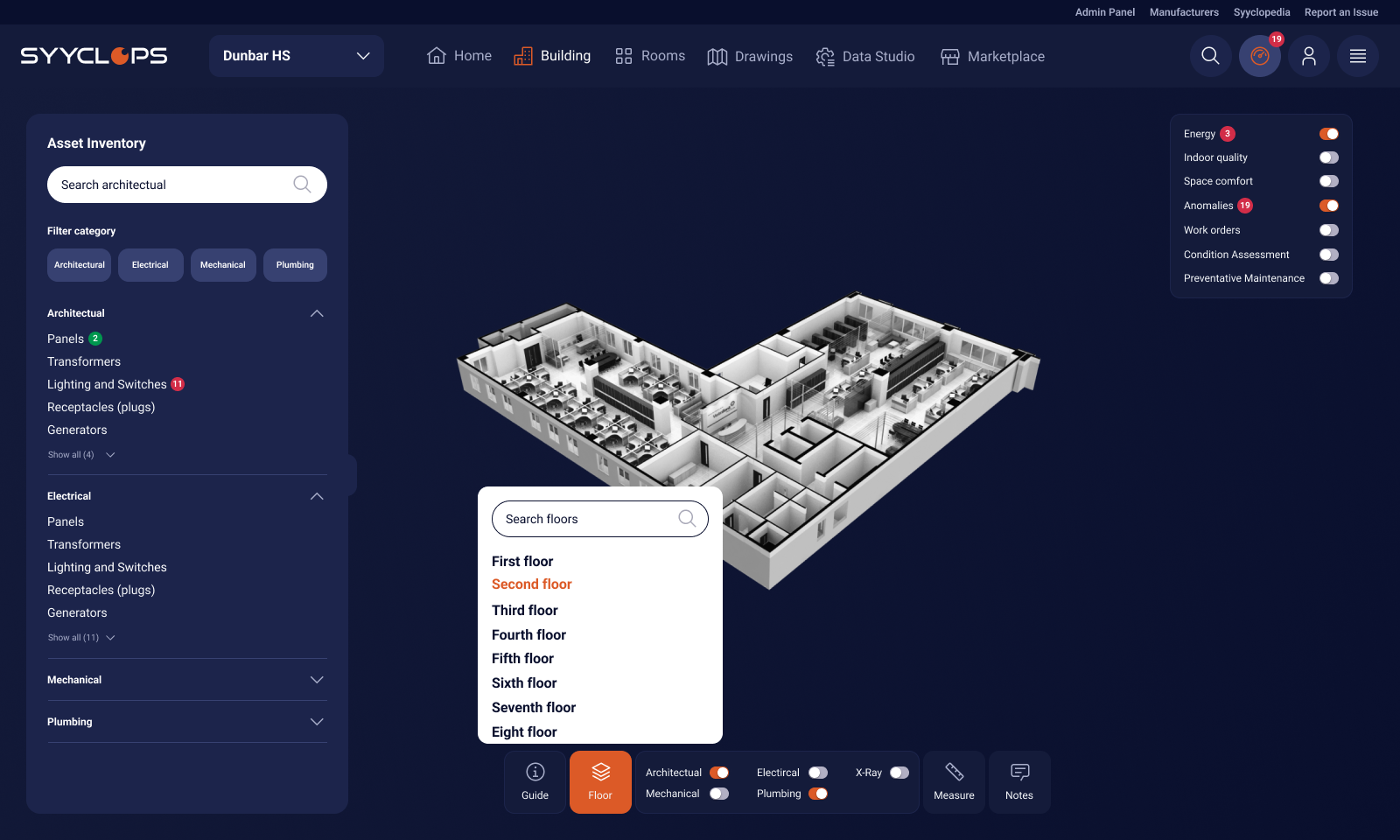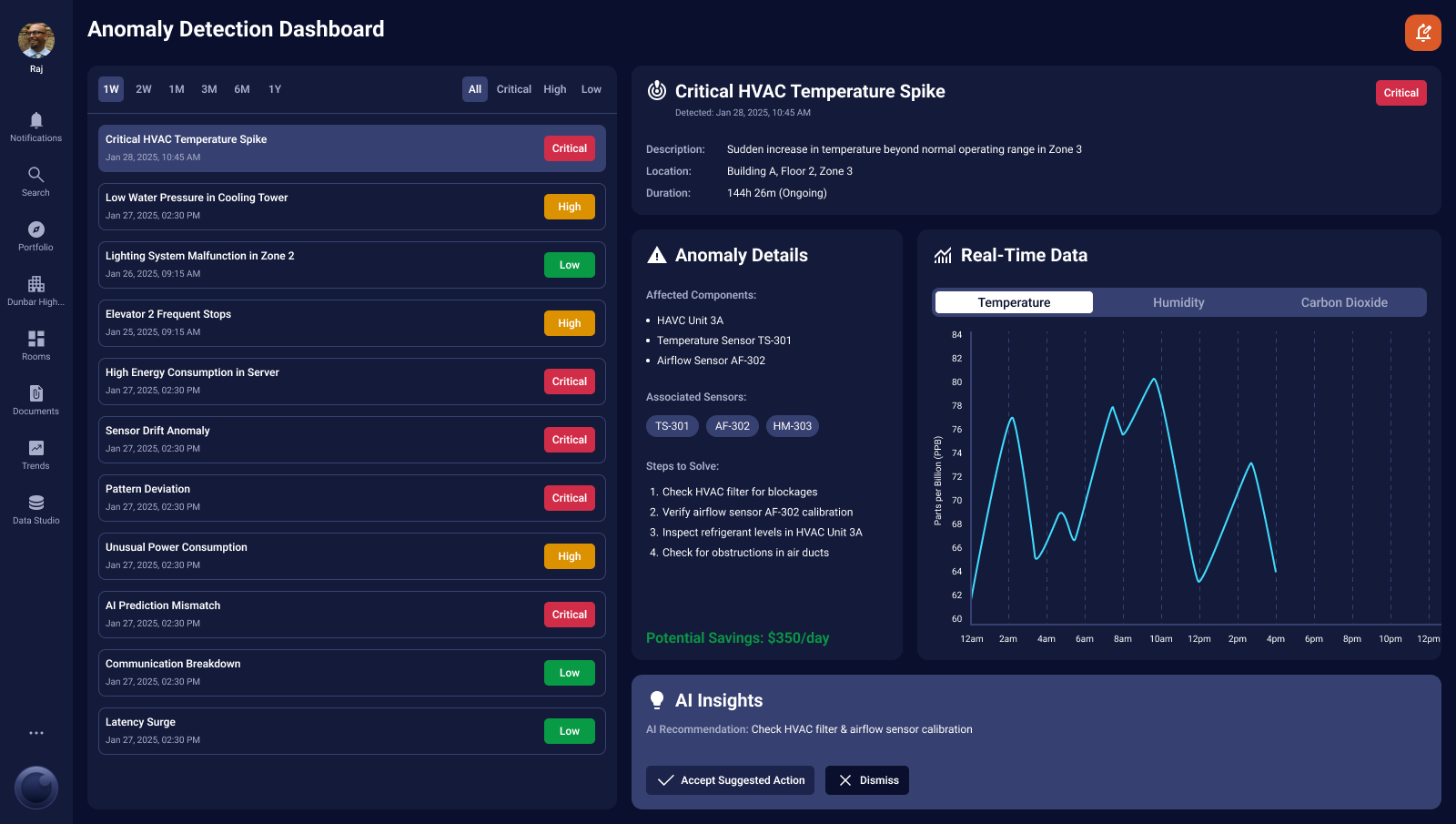


Figma
Confluence
Google Teams
Product Designer (solo)
Web App (B2B enterprise)
Mobile App
Brief Introduction of Syyclops:
Syyclops is a platform focused on digital twins for building performance management and facilities operations. As the sole Product Designer, I was responsible for improving its user experience, upgrading its platform with a strong focus on AI, and redesigning its onboarding and core features to better engage customers.

What problems Syyclops users were facing:
- Outdated interface
- Limited AI features
- Onboarding that confused first-time users
- lack of consistent UI patterns
- Inefficient workflows for facilities teams

The key goals for my design:
- Modernize the user interface
- Enhance usability
- Incorporate AI features to automate data interactions
- Streamline onboarding to reduce churn
- Improve customer engagement metrics
As the sole Product Designer on the Syyclops team, I led end-to-end design, from research and ideation to prototyping and delivery. I collaborated closely with product managers, engineers, and facility experts to ensure our solutions matched user needs and technical requirements.
- Built a data-driven anomaly detection module to automatically surface unusual patterns across building systems
- Prioritizes anomalies by risk and urgency using color-coded alerts
- Visualizes fault areas directly on the 3D Digital Twin
- Recommends next steps, from scheduling maintenance to adjusting environmental settings
- Seamlessly connects to work order creation and AI chat explanations

As part of the platform upgrade, I designed a conversational AI assistant embedded directly in the workspace. It allows facility managers to quickly check indoor air quality, compare spaces, set health notifications, and get suggestions for improving building conditions — all within a conversational interface.
I designed aflexible four-screen conversational interface,with these principles:
AI Chat Panel as the anchor
- Always present as the main communication hub
- Provides quick responses, suggestions, and prompts
- Accepts voice or text
Three flexible contextual screens
- Dynamically switchable to show relevant data
- For example:
- Digital Twins 3D models
- Indoor Air Quality (IAQ) details
- Work Order creation / updates
- Document and resources
- Any other Syyclops module the user needs
Users can freely change these three panels depending on their task

My redesigned experience:
- A modern, intuitive UI
- Streamlined onboarding with guided steps
- AI-powered chat for facility data queries
- Consistent patterns for managing assets
- Improved anomaly / fault detection tools

Redesigning and enhancing Syyclops delivered measurable improvements and qualitative benefits across the entire platform:
(1) Increased User Efficiency
- Reduced time to identify critical building issues by an estimated 20%, thanks to streamlined anomaly detection and contextual data views
- Fewer clicks and less tab-switching, with conversational AI handling quick data queries
(2) Improved User Confidence
- Facility managers felt more empowered to take immediate action based on AI recommendations
- Consistent patterns and a simplified onboarding flow reduced confusion for new users
(3) Faster Response to Faults
- The anomaly engine proactively surfaced potential equipment failures before they escalated, cutting average reaction times by up to 30% (based on user interviews and estimates)
- Work orders could be created in one click directly from anomaly alerts
(4) Higher Customer Engagement
- Incorporating a universal search bar and modern UI encouraged users to explore more platform features
- AI chat interactions showed a 50% higher engagement rate in early tests compared to traditional dashboards
(5) Seamless Data Experience
- Modular 4-screen framework provided a flexible, holistic view of building systems
- Users could customize their workspace without losing the conversational context
(6) Stakeholder Feedback
“The new design feels light-years ahead of where we were. Our teams finally feel confident they can see and act on issues before they become major problems.”
— Building Operations Manager
(7) Business Value
- Improved perceived product quality, supporting Syyclops’ positioning as an innovative, AI-enabled digital twin solution
- Strengthened stakeholder confidence in the product roadmap and future feature investments